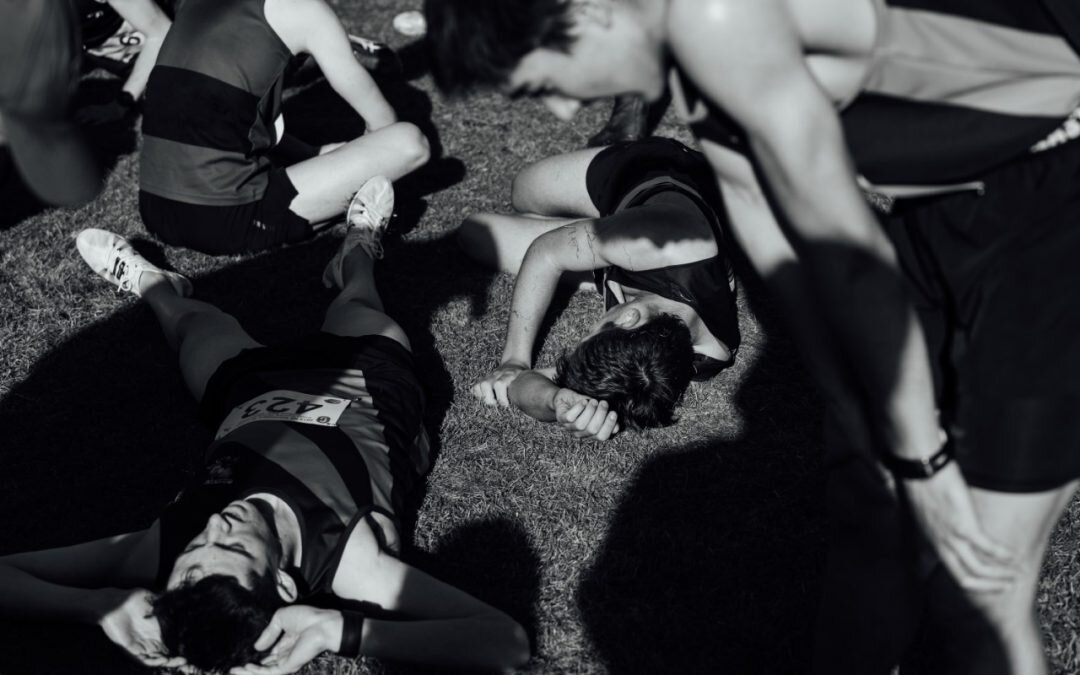Relative Energy Deficiency in Sport (RED-S), Over-training and Burnout: Same Thing Different Name?
Athletes and coaches have, for quite a long time, utilised the concept of periodisation in training programmes to achieve adaptations in human physiology and improvements in performance on race day. The concept of periodisation of training is relatively simple; progressively overload the physiology of the athlete through exercise stress, provide adequate recovery, and you should see improvements in performance. The human body is an incredible machine, a single training session can successfully disrupt our metabolic state, induce changes in our muscle, blood, heart and nervous system and once we recover, we should be able to tolerate a similar or great stimulus.
An athlete will typically experience fatigue and temporary decreases in performance from a hard training session, or after a couple of weeks of large volumes of training. This temporary fatigue and decline in performance with training is called ‘over-reaching’. Over-reaching is the short-term decline in performance that can usually be recovered with a few rest days. This concept and sensation are something many athletes would be familiar with throughout a ‘normal training’ cycle.
However, the question is, when do we start accumulating too much stress through exercise and life and, as a result, reduce our ability to respond to our training? In training, we may plan out appropriate exercise (intensity, duration, volume) and recovery (rest periods between sessions or rest days), both of these can be thought of as external load which you are putting on a person. You can have the ultimate training plan that would ‘theoretically’ produce the best performance at a race, and you could give this programme to two people that participate in one sport and they will perform and adapt to the training completely differently. People will always adapt differently because we are all very different individuals (something I think quite a few people may forget). Our individual characteristics will determine our internal load which may include our; range of motion at our joints, psychological state (stressed, anxious, worried, depressed, mentally fatigued), illness, nutrition, hormones, nervous system activation and genetics. All of these internal factors will influence how you respond to training on a given day, in a prescribed training cycle. Outside of training we also all have different life stressors, family, friends, loss of sleep, work pressures and general life habits (do you nap, do you get massage, do you change your shoes regularly, do you meditate, do you go to yoga/Pilates). These other life stressors are constantly changing, which in all honesty is just life, and this happens for everyone, but as a result they may add to the external and internal loads of an athlete. Sadly, this isn’t usually taken into consideration during training or planning for a race. In this scenario we may see the balance between appropriate exercise stress and adequate recovery become disrupted. This will cause changes to your physiology and metabolism, which is purely a result of your body trying to compensate for the excess loads. Some symptoms may be; an increase in sympathetic nervous system activity and a reduction in heart rate variability, or an increase in resting heart rate, you may produce more cortisol (stress hormones), you may rely more on your carbohydrate stores more during exercise and feel more fatigued at the end of your session.
For many years’ coaches, athletes and sport scientists have discussed the concept of ‘over-training’. A state where athletes have accumulated too much training load, not been prescribed or given enough rest and have ‘burnout’. Athletes will experience declines in health, with symptoms of overtraining being; fatigue, performance declines or plateaus, mood disturbances and increased injury and illness. In the scientific world we recognise that this physiological state must exist, there is an abundance of anecdotal evidence to support it, yet there is a general lack of ‘hard core’ scientific evidence (minimal scientific studies or academic journal articles). Why? Well it is really hard to get ethical approval to over-train people, even if it is in the name of science, and not many people would volunteer to be put into a state of ‘over-training’. This lack of evidence is problematic, as it means that we do not have the diagnostic tools required to identify overtraining, and typically it is the last resort diagnosis when all other options have been eliminated. Most of the academic literature in this space would suggest that we have no idea how long it takes to get into or out of a state of overtraining, what are the effects or inputs of the other life stressors, at what point in over training do athletes recognise that they are not performing well, when should a coach or athlete seek help and what is the long term health outcome from overtraining? That is a lot of unknowns…….
But, as we’ve just discussed, overtraining is a physiological disturbance that progressively worsens without adequate recovery. You should almost think of it as a continuum, where you can move from healthy to ok to not great to bad to worse and back again. How athletes get into a state of physiological disturbance can vary but typically it can be based on excess external load (life and training stress), inadequate nutrition for recovery, lack of sleep, illness and high stress responses (increase in internal load, reduced HRV, increase in resting heart rate, increased cortisol, increased carbohydrate used).
What I find interesting is that this explanation for overtraining is the exact definition that is written in all the research that describes Relative Energy Deficiency in Sport (RED-S). The progressive decline in health associated with RED-S is the result of an energy imbalance that is created intentionally or unintentionally, where an athlete doesn’t apply good or even sufficient nutritional practices in order to meet the energy requirements of the training session and life. It is thought that the body will prioritise energy for training and the remaining energy will not be enough to maintain basic physiological systems (reproduction, growth, cardiovascular, immune, bones, muscles), this is known as low energy availability. Athletes training with low energy availability for some weeks or months will experience poor performance, mood disturbances (anxiety, depression), poor cardiovascular health, increased injury risk, poor immune health, hormonal and metabolic disruptions. All of which are symptoms that are noted in all people diagnosed with over training.
So, are they different? My thoughts: No. Over-training was first described by sport-scientists when all other medical options have been cleared, however the research in over-training has never accounted for the athlete’s nutrition behaviours, it only looked at training load. Nutrition is a crucial component of recovery, and for this reason you see many elite athletes and teams working with Sport Dietitians and Nutritionists in order to achieve optimal nutritional intake to minimise metabolic and physiological disturbances that would limit performance in training and on race day. RED-S was defined by primarily sport dietitians, and over-training was defined by sport scientists. Both professions acknowledge there was metabolic and physiological imbalances that were affecting normal health functions, but each use their own terminology to define the problem.
At Sports Lab we see a lot of people who are over-trained or burnout and they have bounced from medical professional to health care professional, never feeling like they get the right answer or any help. Each profession may have had its own terminology and may have detected slightly different symptoms based on what they see in patients every day. For example, a doctor may have checked a patient’s blood tests, a physiotherapist may have detected increase injury rates and muscle tightness, a nutritionist may have commented on the dietary intake, a coach may have noticed the plateaus in performance and increase in anxiety around races and training. Each profession has a slightly biased opinion, through no fault of their own; their interpretation on what could be the problem is a result of their training and speciality. But all too often this means a person moves from expert to expert gathering pieces of information because not many people will look at that individual holistically and consider not only the presenting problem but the physiology, metabolism, training load, mental health or nutritional intake. Therefore, researchers have started to suggest that a team-based approach for RED-S/Overtraining is the best method for navigating this syndrome with the athlete. This is one of the reasons why we employ a multidisciplinary approach and why we are growing our team with more services being provided here at Sports Lab.
I think the take home message from this is: an athlete with low energy available for normal metabolic and physiological functions is not healthy, even though they may look completely fine (not injured or sick) and may still be training relatively well. They do not have the minimal energy required to maintain basic healthy functions (muscle growth, reproduction, or bone strength) and as a result their physiology is disturbed and imbalanced. This can be achieved through excessive exercise, poorly planned nutritional intake, not enough nutritional intake and poor or not enough recovery. Not everyone will present with the same symptoms and we must recognise that over-training and RED-S is a continuum-based syndrome. This means that you can progress from healthy to unhealthy and extremely unhealthy and back again. We should acknowledge that every athlete, male and female can tolerate different external and internal loads, and sometimes we need to adjust these to make sure that our health is a priority. Ultimately what this comes down to is, a healthy athlete is one that will adapt to training and life and will perform at their best every day. Health and maintaining this should be priority, not how many hours, kilometres or kudos you achieved in the last week.
Dr Claire Badenhorst (PhD Exercise Physiology, Academic at Massey University in Auckland) has research focus areas currently in female health, iron deficiency and endurance athletes. She also happens to be the newest member of the Sports Lab team. Well…technically…she hasn’t even started yet. She’s taking her first bookings on the 18th of February!


